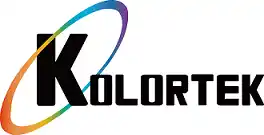Some popular applications for thermochromic pigments
April 4th, 2023Thermochromic pigments are intelligent materials that change color in response to temperature changes. They have been gaining popularity in recent years as designers use them in a variety of applications. In this article, we will explore some of the most popular applications for thermochromic pigments and how they are being used in various industries.
What Are Thermochromic Pigments?
Thermochromic pigments are materials that change color when exposed to different temperatures. These pigments contain tiny microcapsules that are filled with a dye and a liquid crystal. When the temperature changes, the liquid crystal expands or contracts, causing the dye to change color. The higher the temperature, the more expanded the liquid crystal becomes, creating a more dramatic color change.
Thermochromic pigments come in a variety of colors, ranging from blues and greens to reds and yellows. They can be transparent or opaque, and their color-changing properties can be activated at different temperature ranges, depending on the specific application.
Popular Applications for Thermochromic Pigments
- Food and Beverage Packaging
One of the most popular applications for thermochromic pigments is in food and beverage packaging. Thermochromic labels are becoming increasingly common on food and beverage containers to alert consumers to changes in temperature. For example, a thermochromic label on a milk carton would change color if the milk inside had spoiled due to exposure to heat. This technology is also being used in beer cans to alert consumers when their beverage has reached the ideal drinking temperature.
- Clothing and Textiles
Thermochromic pigments are also being used in clothing and textiles. Clothing designers are using these pigments to create garments and accessories that change color in response to changes in body temperature. This creates a unique and interactive fashion statement that reflects the wearer’s mood and body temperature. Thermochromic inks are being used to print designs on t-shirts, hoodies, and other clothing items. They are also used to create heat-sensitive color-changing fabrics for curtains, upholstery, and bedding.
- Medical Devices
Thermochromic pigments are being used in the medical industry as a way to detect changes in temperature in patients. For example, thermochromic labels can be placed on medical devices, such as catheters or IV bags, to indicate when the device is at the proper temperature for use. They can also be used in monitoring devices that track a patient’s temperature to alert healthcare professionals when the temperature reaches a critical level.
- Promotional Products
Promotional products are another popular application for thermochromic pigments. Companies are using these pigments to create branded products that change color in response to temperature changes. For example, a coffee mug with a thermochromic logo would change color when hot liquid is added, creating an eye-catching display. Thermochromic pigments are also being used in toys and novelty items to create color-changing effects.
- Security Printing
Thermochromic pigments are widely used in security printing to prevent counterfeiting. These pigments are being used in currency, passports, and other important documents to create color-changing effects that are difficult to reproduce. By incorporating thermochromic pigments into security features, these documents become more secure and harder to counterfeit.
- Automotive Industry
The automotive industry is another area where thermochromic pigments are being used. These pigments are being used to create paint that changes color when exposed to different temperatures. This technology is being used in high-end cars to create unique and eye-catching designs. It can also be used on car interiors, such as seat covers or steering wheels, to create color-changing effects.
- Architecture and Interior Design
Thermochromic pigments are increasingly being used in architecture and interior design. They can be applied to walls, ceilings, and floors to create color-changing effects that respond to temperature changes. This technology can be used to create dynamic and interactive spaces that respond to the environment and user activity. It is also being used in glass windows to create shading effects that respond to changes in sunlight and temperature.
In conclusion, thermochromic pigments are intelligent materials that are being used in a variety of applications. From food and beverage packaging to clothing and textiles, these pigments are providing designers with a new way to create unique and interactive products. They are also being used in medical devices, security printing, automotive design, and architecture to create innovative solutions. With their ability to change color in response to temperature changes, thermochromic pigments are proving to be a versatile and valuable material for a wide range of industries.
